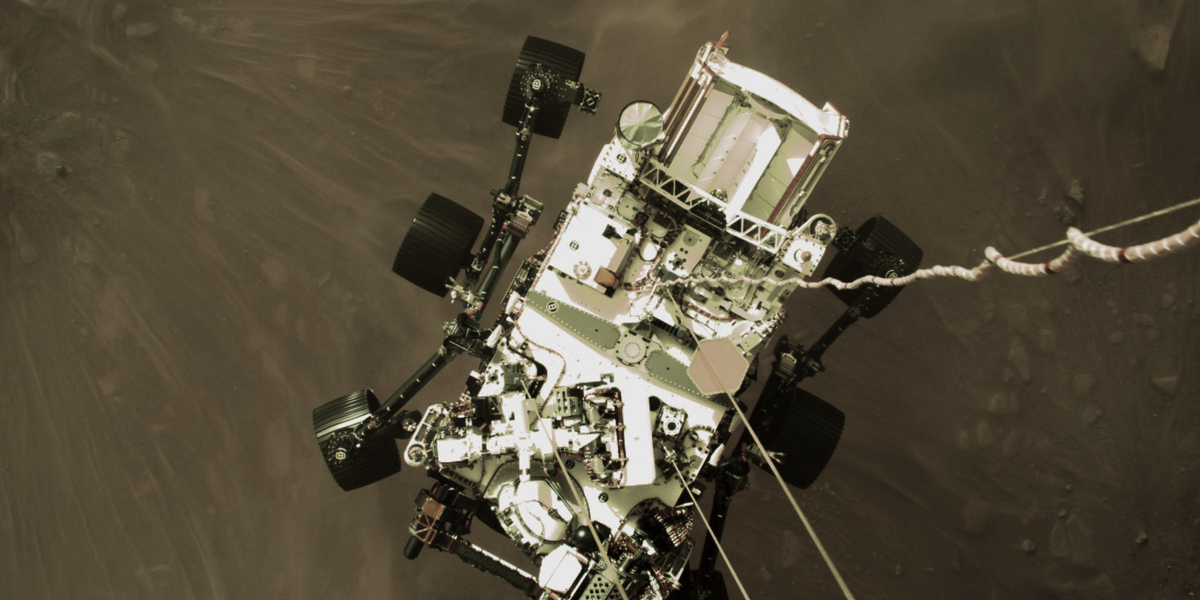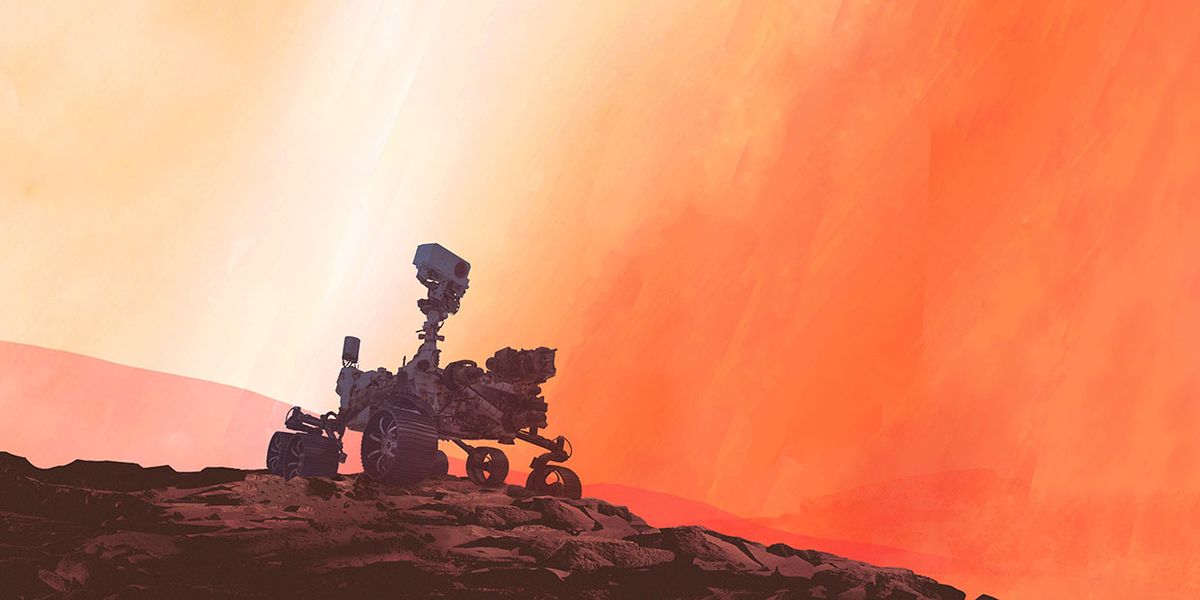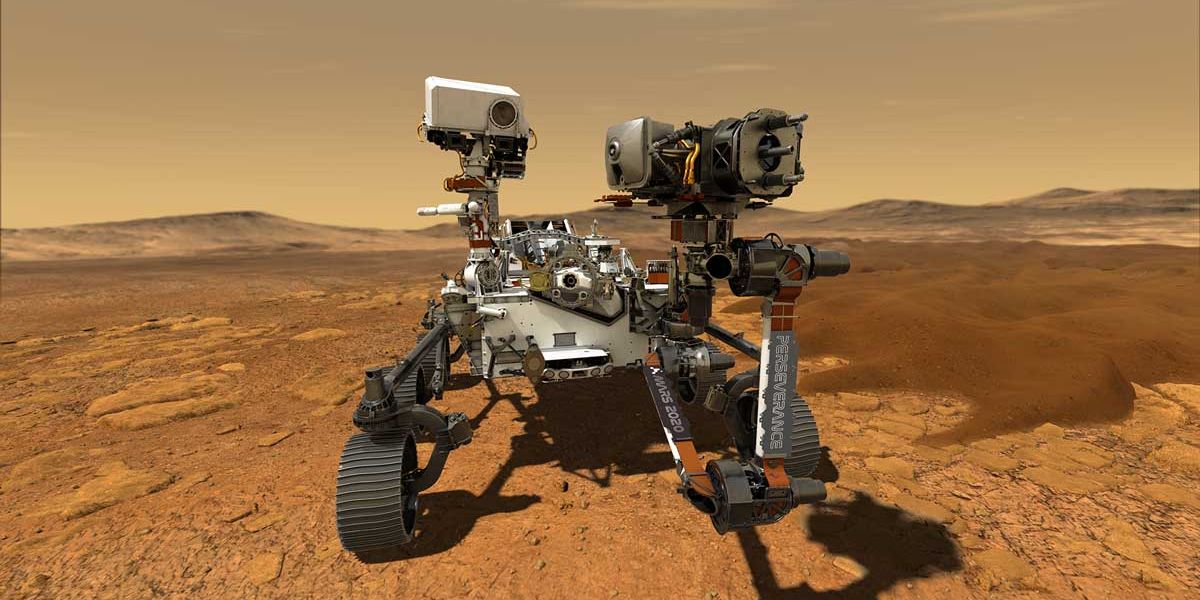Perseverance
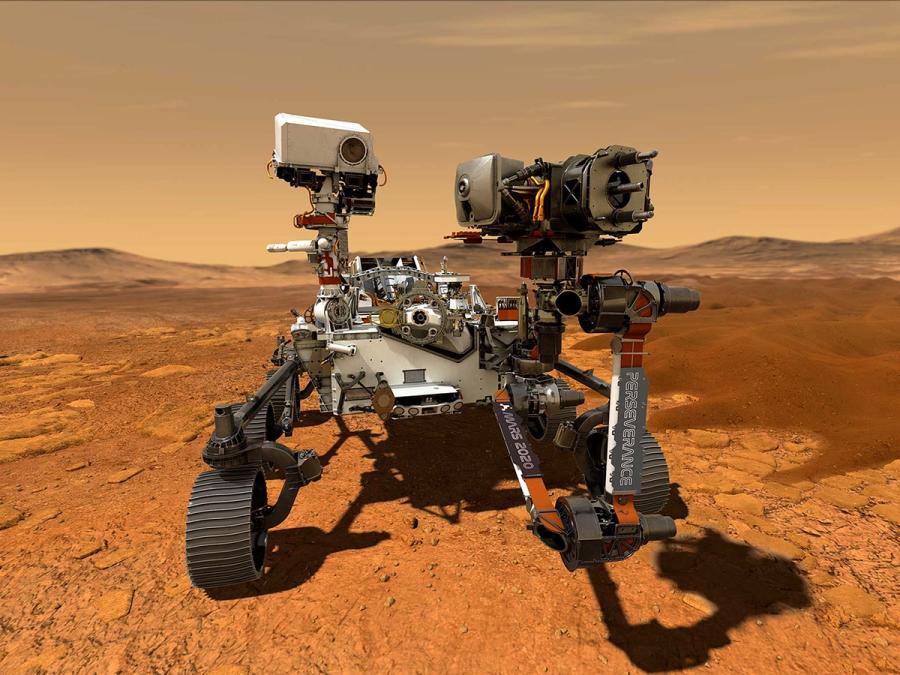
Perseverance is a semi-autonomous rover the size of a small car designed to explore the surface of Mars. It carries cameras and scientific equipment to search for evidence of past microbial life. The rover landed on Mars on 18 February 2021.
- Creator
- Year
- 2020
- Country
- United States 🇺🇸
- Categories
- Features
Did you know?
Perseverance's nickname is Percy.
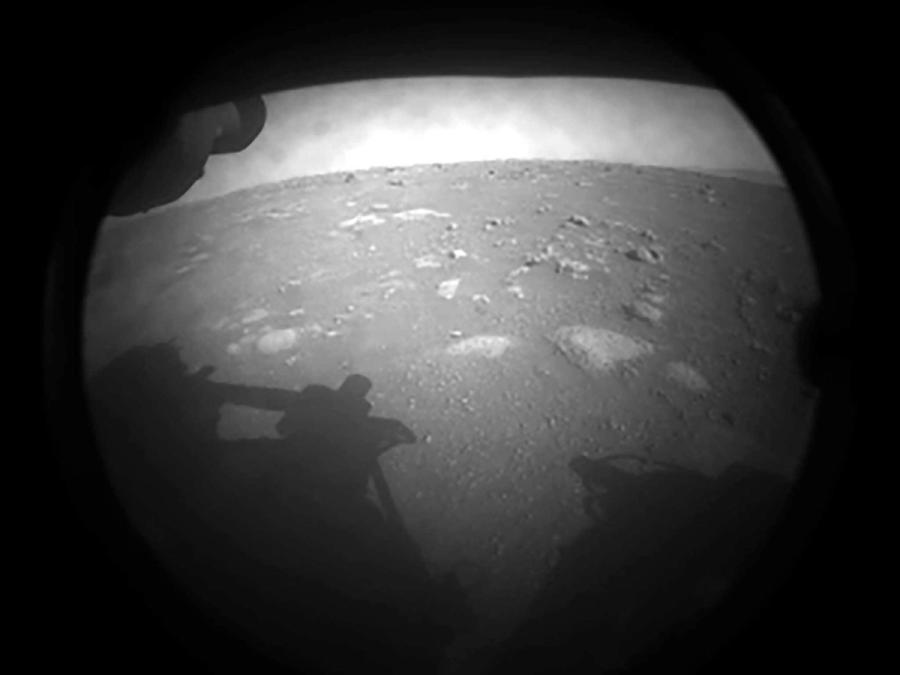
History
After the success of the Curiosity rover, NASA decided to send a second large rover to Mars. While Perseverance looks much like Curiosity in its overall design, NASA learned many important lessons from Curiosity's years on Mars. Perseverance includes more durable wheels, a bigger and stronger robotic arm, more cameras, and improved autonomous capabilities, which will allow it to do more driving without as much reliance on instructions from Earth. Jezero Crater was selected as a landing site for the rover, because the ancient crater used to be full of water, with rivers flowing in and out of it. The goal was for Perseverance to explore the ancient lake bed and river deltas, collecting samples of dirt and rock which it will store in tubes to one day be retrieved by a different robot and brought back to Earth. Perseverance successfully landed on Mars on February 19, 2021. It brought along, tucked under its belly, a small autonomous helicopter called Ingenuity, which in April 2021 successfully completed the first of what would be more than 50 flights. Perseverance and Ingenuity are currently exploring the Martian environment, having already sent more than 400,000 images back to Earth.
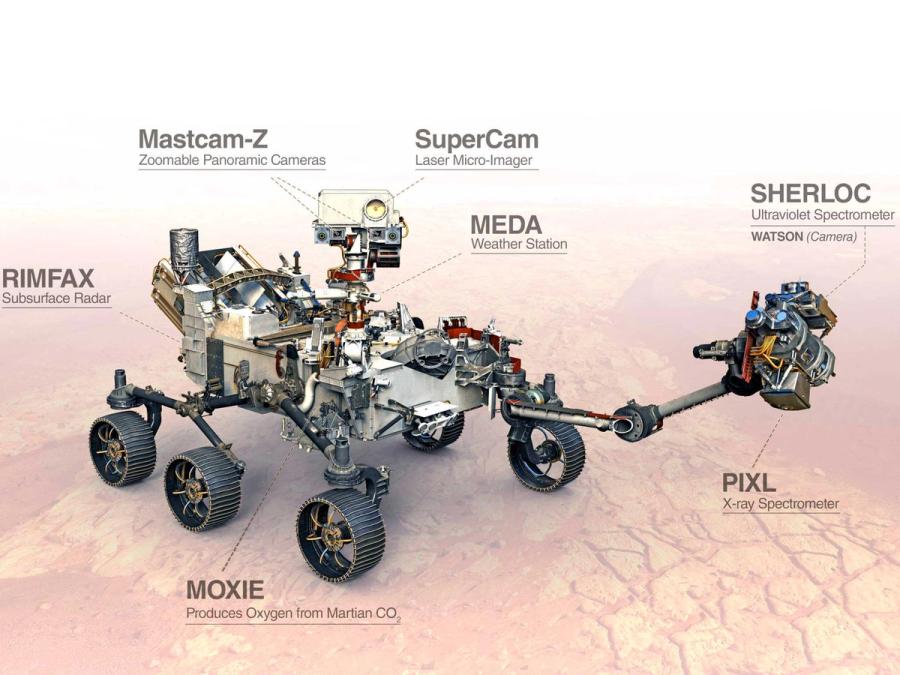

Specs
- Overview
Perseverance is only a few centimeters larger than its predecessor Curiosity, but is over 100 kg heavier. It carries a large turret on the end of its robotic arm, which includes a coring drill and other scientific tools. It also has five more cameras than Curiosity (for a total of 23), and is equipped with a pair of microphones.
- Status
Ongoing
- Year
2020
- Website
- Width
- 270 cm
- Height
- 220 cm
- Length
- 300 cm
- Weight
- 1025 kg
- Speed
- 0.15 km/h
- Sensors
Seven science instruments, including Mastcam-Z, a color camera capable of panoramic and stereoscopic imagery, and SuperCam, a combination camera, rock-vaporizing laser, and spectrometer that can identify the composition of rocks and soil. Other sensors include a close-range microscopic camera and spectrometer, ground-penetrating radar, and sensors to measure temperature, pressure, humidity, wind speed and direction, and atmospheric dust characteristics.
- Materials
Main materials are aluminum and titanium. The chassis, the core of the rover, has insulated surfaces to house the electronics.
- Compute
Processor: Radiation-hardened central processor with PowerPC 750 Architecture: a BAE RAD 750 operating at up to 200 MHz. Memory: 2 GB of flash memory, 256 MB DRAM, 256 KB of EEPROM.
- Power
Radioisotope thermoelectric generator (converts heat from plutonium-238 into electricity). Two lithium-ion rechargeable batteries to meet peak power demand.
- Cost
- Approximately US $2.75 billion over 11 years

